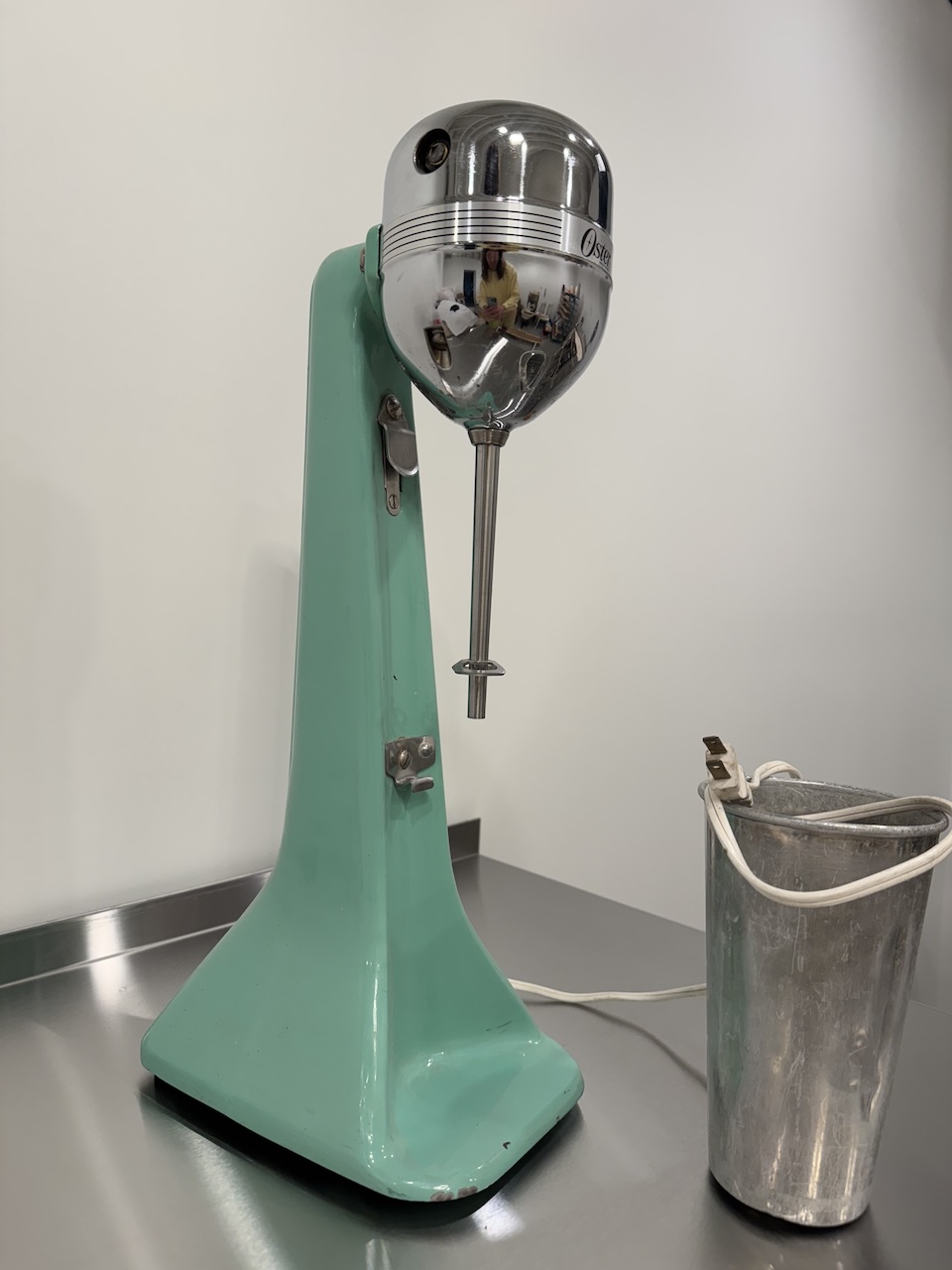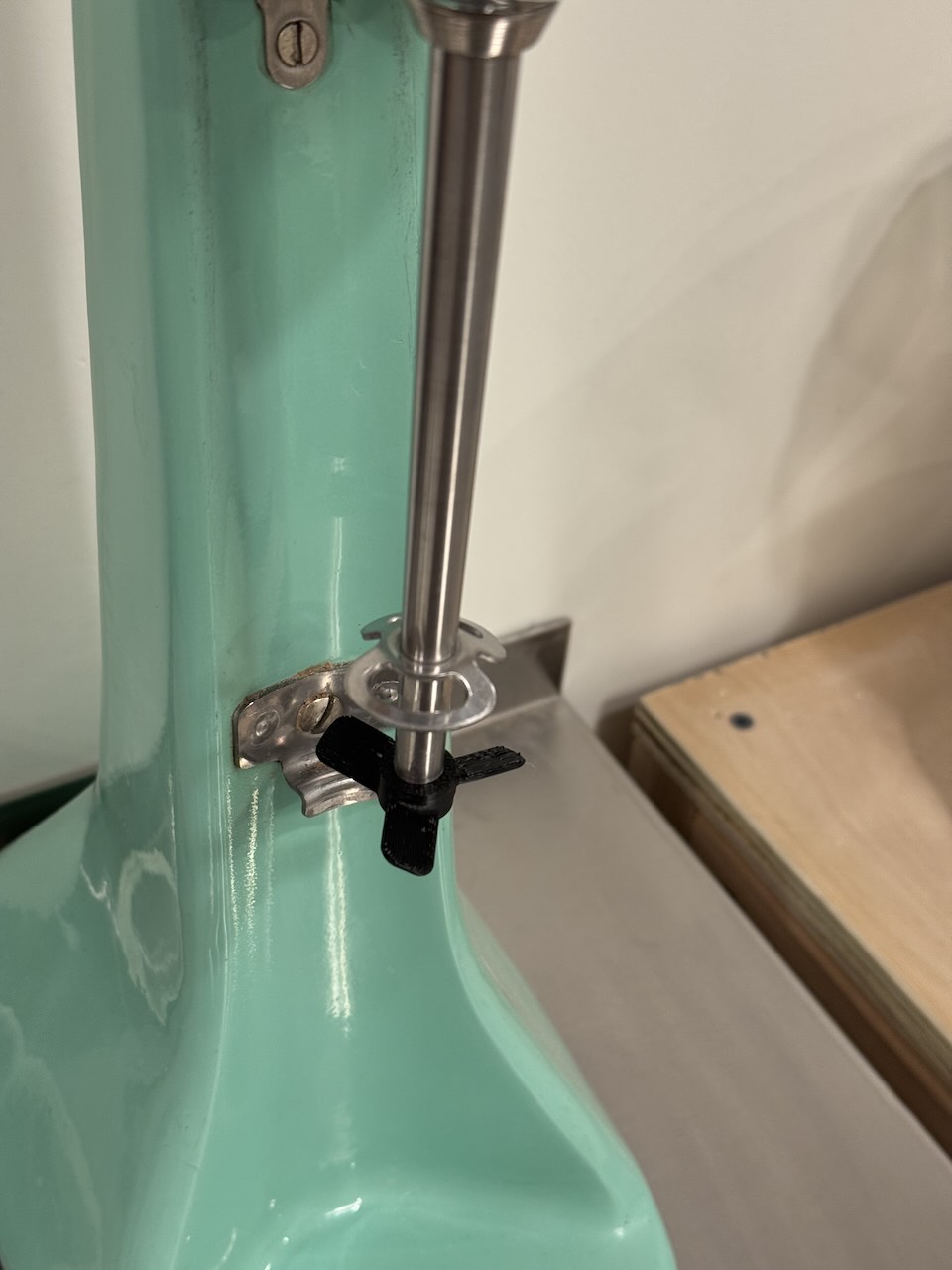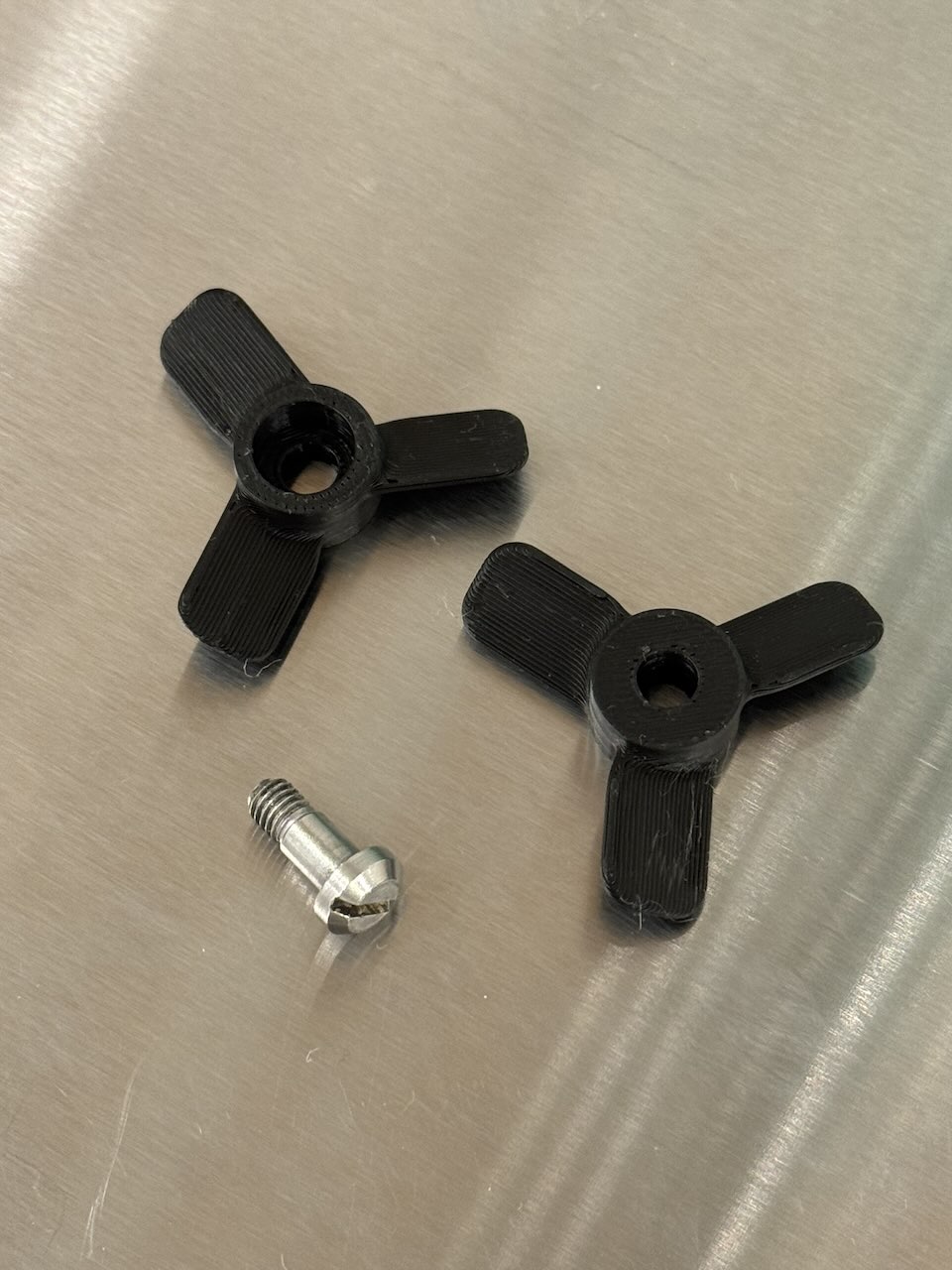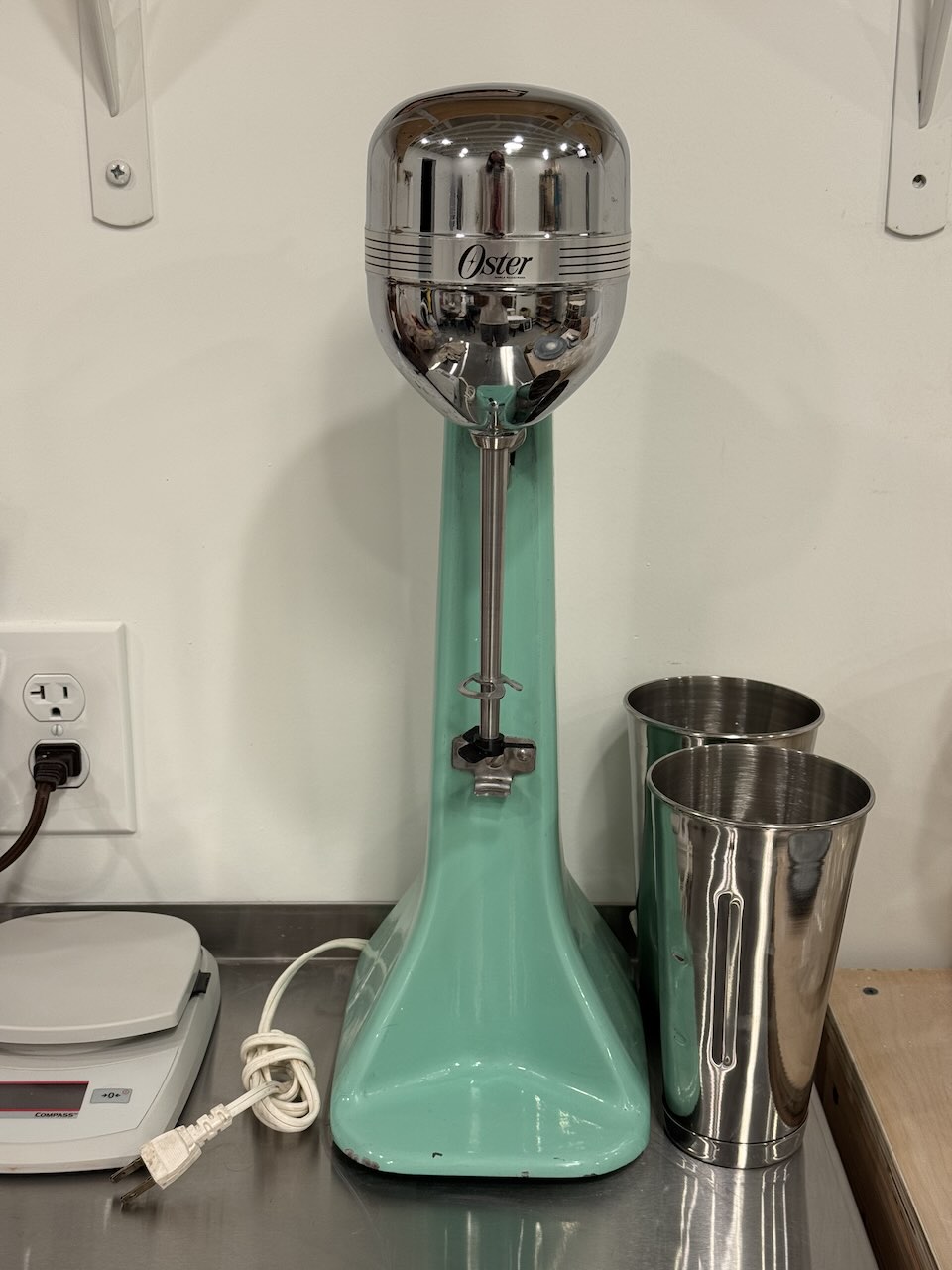So here’s a fun little story that starts in an antique store. I’m browsing around with Gracie (an occasional date-night activity of ours) and I spot this vintage Oster milkshake mixer. I find it to be genuinely beautiful with its mid-century industrial aesthetic that modern appliances have somehow forgotten about. But at the time, I wasn’t craving a milkshake.

The Lab Equipment Problem
I’m always hunting for random studio tools and was passively searching for a lab-grade propeller mixer for mixing batches of glaze tests. These industrial beasts are designed for mixing highly viscous fluids, and ceramics nerds have discovered they’re perfect for glazes and clay. If you want a decent one, you’re looking at $100-$300. (Tony Hansen has written extensively about these on digitalfire.com, and that guy knows more about propeller mixers than anyone should reasonably need to know.)
The vintage Oster was priced at $100. Which means I could potentially get lab-grade mixing capability for the bottom end of the new equipment price range, plus I’d own something built when manufacturers cared about making things that wouldn’t break after 18 months.
The opportunity was obvious: worst case, it doesn’t work for my studio and I end up with a cool milkshake maker. Best case, I solve my propeller mixer problem while acquiring a piece of industrial art.
Hooray for Mechanical Design
The engineering was straightforward. The Oster had a threaded shaft with a shoulder screw holding a washer at the bottom—perfect for swapping out attachments. Remove the washer, add a propeller, and you’ve converted a milkshake mixer into glaze lab equipment.

Finding the right propeller could have involved hours of Amazon deep-diving (and we’ve all been there, doom-scrolling through pages of increasingly specific industrial components at 2 AM), but this is where having a 3D printer gets interesting. Tony Hansen actually sells CAD files for propellers on his website. Three dollars later, I had the digital blueprint.
3D Printing Meets Mid-Century Engineering
I had to modify the file a bit (Tinkercad is great for quick engineering tweaks) to accommodate a countersunk screw. I printed it in standard PLA filament, which probably won’t last forever, but for a few grams of filament it’s the most economical testing approach. This is the beautiful thing about 3D printing for niche applications: your material costs for experimentation are basically zero.

The original mixer came with a banged-up metal cup, so I ordered some new stainless steel malt cups from Amazon.
Total investment: $119.

The Build Quality Thing
Here’s what I really enjoyed about this project: that vintage mixer was built to last in a way that modern equivalents simply aren’t. The motor has real heft. The single switch feels rock solid. The housing doesn’t flex or rattle and the paint is from the atomic era. Someone in the 1950s or 60s designed this thing expecting it to run for decades, and apparently they were right.
We’ve somehow convinced ourselves it’s okay that everything needs to be made cheaply, sold at a premium, and replaced every few years. But a lot of the best tools and appliances were made before that philosophy took over. They’re sitting in antique stores and estate sales, often priced as junk rather than functional equipment.
There’s probably some piece of vintage equipment sitting in a second-hand store right now that could solve a problem you didn’t even know you had. And there’s something satisfying about giving old equipment a second life doing something it was never quite designed for.